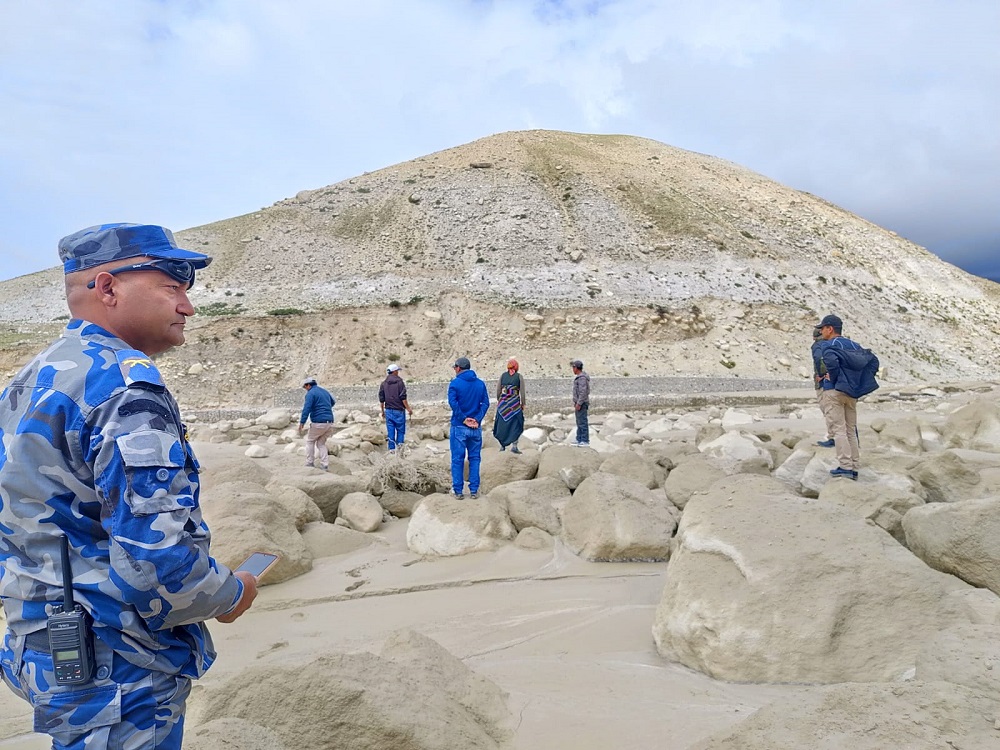A devastating flash flood that struck Upper Mustang last week caused extensive damage to local infrastructure, with preliminary estimates putting the loss at over Rs 15 million. A joint team began on-site inspections to assess the destruction caused by the flood, which is suspected to have resulted from a glacial lake outburst.
A team led by Lomanthang Rural Municipality Chair Tashi Narbu Gurung, Vice-Chair Chyumi Bisht, Chief Administrative Officer Bikas KC, ward chairs and members from all five wards, along with technical staff, Nepal Police, and Armed Police Force personnel, carried out an initial field inspection of the affected areas.
According to Chief Administrative Officer KC, the flood, which occurred on Tuesday evening last week, July 8, completely destroyed seven bridges, including three concrete motorable bridges, one iron bridge, and three wooden bridges, along a branch road in the rural municipality. Among them was a concrete bridge connecting Bharsa village at Chumjung in Ward 4, washed away by the flooded Chuama River.
While the bridges suffered complete structural failure, officials confirmed that there were no human or livestock casualties. Chair Gurung stated that the damage has blocked vehicle movement on the rural ring road and affected several connecting roads.
The origin of the flood is under investigation, but local officials suspect it was caused by a glacial lake outburst, as the region did not experience rainfall at the time. “We spoke with locals from the river source area and surrounding highlands. They reported no rain, which leads us to believe a glacial lake burst may be the cause,” Chair Gurung said.
Armed Police Force Inspector Bishnuhari Thapa, stationed at the border outpost in Nechung, Chhoser, confirmed that a team sent to trace the source of the flood has returned, with information from yarsagumba collectors that glacial lakes exist near the headwaters of the Chuama River.
Meanwhile, Lomanthang-2’s Chhoser and Loughekar Damodarkunda Rural Municipality Chair Lopsang Chhomphel Bisht noted that dozens of glacial lakes are situated at the headwaters of the region's tributaries. He warned that rising ground temperatures due to climate change may be causing chunks of ice from high-altitude glaciers to collapse, increasing the risk of glacial lake outbursts. -- RSS











